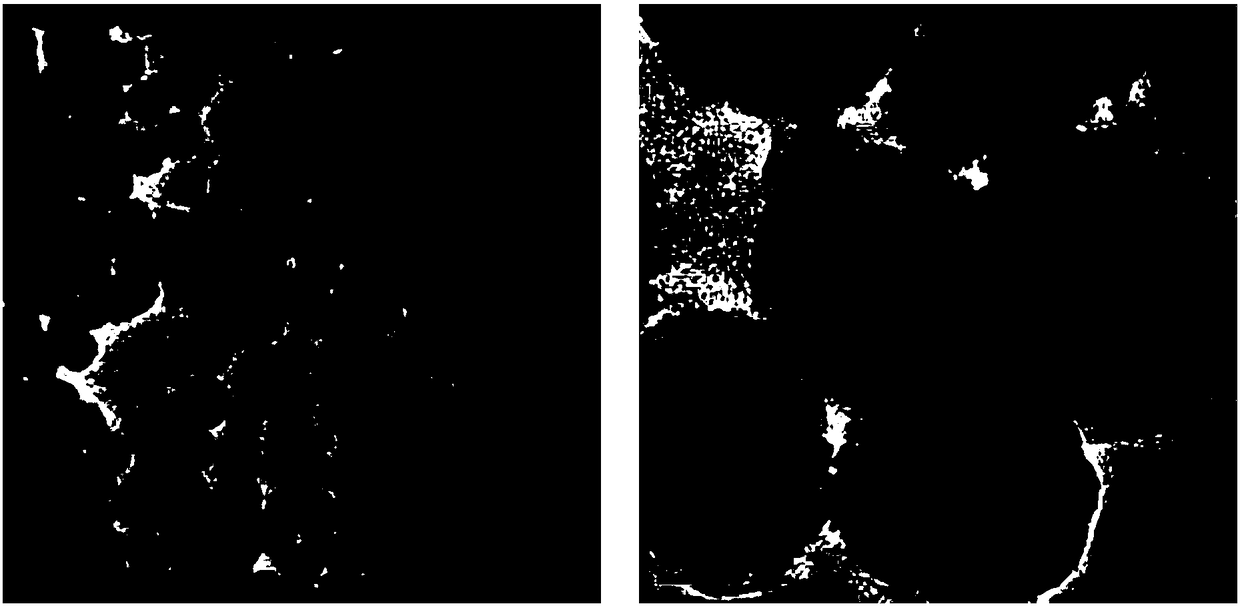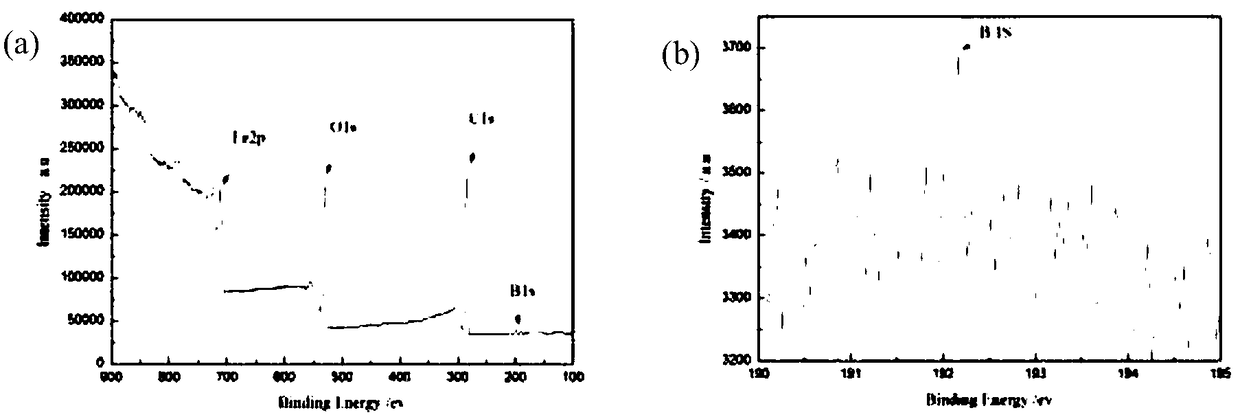Magnetic nanomaterials based on inorganic boronic acid modification and its preparation method and application
A magnetic nano and boric acid technology, applied in inorganic chemistry, chemical instruments and methods, and other chemical processes, can solve the problems of low extraction of active ingredients, long production cycle, high energy consumption, etc., and achieve good magnetic response effect
- Summary
- Abstract
- Description
- Claims
- Application Information
AI Technical Summary
Problems solved by technology
Method used
Image
Examples
Embodiment 1
[0056] Will "Fe 3 o 4 —Fe 2 o 3 "Magnetic nanoparticles (0.1g) of the core-shell structure are in 100mL mass fraction of 80% ethanol solution, the water bath temperature is normal temperature 20 ℃, ultrasonic 10 minutes under 300W ultrasonic power, make its magnetic nanoparticles completely dispersed. After the particles were completely dispersed, add a certain amount of aqueous ammonia solution to it, and continue ultrasonication for 10 minutes. After the ultrasonic finish, slowly add natural boric acid (0.5g), and the temperature of the water bath is 20°C at room temperature, and the ultrasonic power is under the condition of 300W. Ultrasonic reaction for 9 hours. After the reaction, magnetic separation was used to obtain 0.15 g of magnetic nanomaterials modified based on inorganic boric acid.
[0057] Among them, the "Fe 3 o 4 —Fe 2 o 3 "The preparation method of magnetic nanoparticles with core-shell structure includes: Fe 3 o 4 Magnetic nanoparticles (1.0g) are d...
Embodiment 2-19
[0059] Prepare magnetic nanomaterials based on inorganic boric acid modification according to the method of Example 1, the difference is that natural boric acid is replaced by natural borax, metaboric acid, pyroboric acid, boric acid ester, boron oxide, sodium tetraborate, boronite, Colemanite, magnesium borate, calcium borate, zinc borate, aluminum borate, cobalt borate, nickel borate, manganese borate, rhodium borate, palladium borate calcium hexaborate, boron-containing halogen compounds.
Embodiment 20-29
[0061] Prepare magnetic nanomaterials based on inorganic boronic acid modification according to the method of Example 1, the difference is that the magnetic nanomaterials are replaced by Fe 3 o 4 , Fe 2 o 3 , FeNi(Mo), FeSi, FeAl, BaO·6Fe 2 o 3 , Sr·6Fe 2 o 3 , Pb 6Fe 2 o 3 、SrCa·6Fe 2 o 3 、LaCa·6Fe 2 o 3 .
PUM
| Property | Measurement | Unit |
|---|---|---|
| particle diameter | aaaaa | aaaaa |
| thickness | aaaaa | aaaaa |
Abstract
Description
Claims
Application Information
 Login to View More
Login to View More - R&D
- Intellectual Property
- Life Sciences
- Materials
- Tech Scout
- Unparalleled Data Quality
- Higher Quality Content
- 60% Fewer Hallucinations
Browse by: Latest US Patents, China's latest patents, Technical Efficacy Thesaurus, Application Domain, Technology Topic, Popular Technical Reports.
© 2025 PatSnap. All rights reserved.Legal|Privacy policy|Modern Slavery Act Transparency Statement|Sitemap|About US| Contact US: help@patsnap.com



